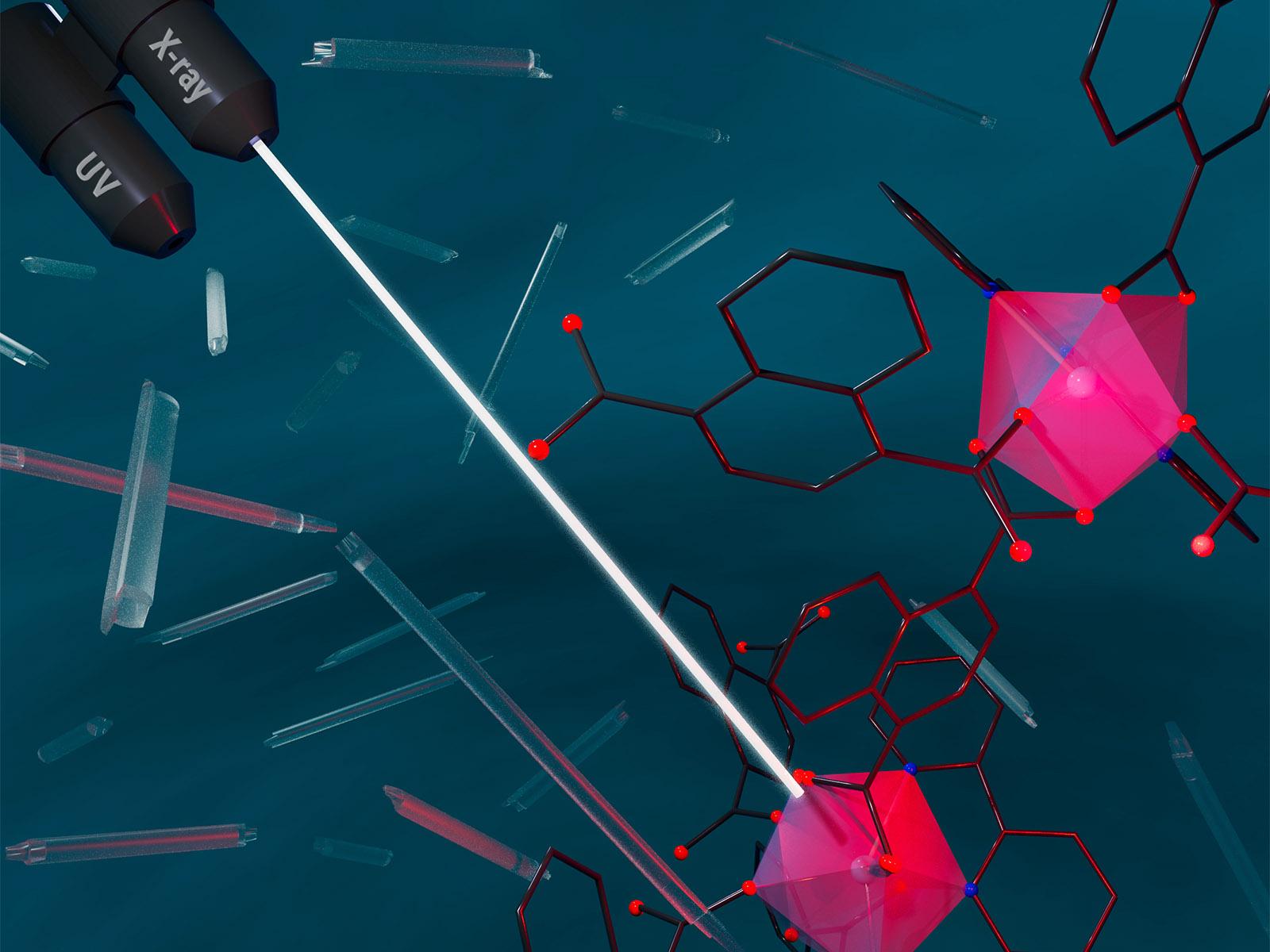X-Ray Vision—Powers in Pink
Article on non-traditional scintillators makes hot list

Nathan Johnson, PNNL graphic designer, created the artwork for the journal’s cover.
(Image by Nathan Johnson | Pacific Northwest National Laboratory)
Researchers at Pacific Northwest National Laboratory (PNNL) were recognized for being in the top 10 percent of the articles published in CrystEngComm during the quarter.
Making it on CrystEngComm’s HOT list, the article, “Designing scintillating coordination polymers using a dual-ligand synthetic approach,” highlights research on existing materials that are non-traditional scintillators. The PNNL authors are Ana Arteaga, Alice Lulich, and Gian Surbella.
“The team is very excited and honored by the designation that our article has received,” said Surbella. “This distinction is given at the journal editors’ discretion and reserved for the top 10 percent of research published in this journal. Honestly, we're completely flattered and a bit over the moon with excitement as we were also selected for a front cover feature for this journal. This is a special win for the team.”
Scintillating (super)powers
Scintillators are materials that convert high-energy radiation, such as X-rays or gamma rays, to a near visible or visible light. They are commonly used as detectors for medical imaging, security, and geophysical exploration.
“Scintillating materials are in all actuality quite common; finding uses in applications where X-ray or radiological material detection and quantification is paramount,” said Surbella. “This is a mature technology that is widely used industrially and in the laboratory, especially within detector materials for numerous instrument platforms.”
The PNNL team identified materials that can serve as non-traditional scintillators, emanating a bright pink light that is visible to the naked eye when exposed to X-rays.
“The (pink) light provides a rapid and overt means to detect an invisible X-ray,” said Surbella. “The compounds that we studied are somewhat unique as far as scintillators go because they're a bit non-traditional in terms of their construction.”
The research centered on a family of europium: a chemical element containing hybrid materials where metal and organic compounds are blended at the molecular level. The PNNL team plans to continue studying these designer materials to better understand the design criteria for intentionally promoting framework materials that scintillate, making them customizable for niche applications.
“While this class of materials is extensively studied, only recently is the scientific community beginning to discover the possible utility of metal-organic frameworks for designing scintillating materials,” said Surbella. “This is an area of focus for our team. It is exciting in and of itself, but when combined with the fact that the mechanism that underpins this behavior is poorly understood makes the study of these materials even more interesting!”
Published: December 5, 2023